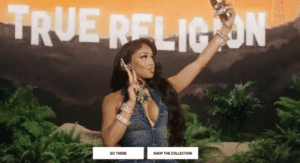New technologies are making it easier to buy things than ever before. Mobile searches in-store let you check prices, a virtual assistant lets you ask to purchase an ingredient mid-recipe or a refrigerator tells you when you are out of beer—consumers now expect a frictionless transaction. Whether we’re talking about the subscription economy or executing an individual mobile payment, consumers want to part with their dollars as smoothly as possible…or they’ll take those dollars elsewhere.

But however blasphemous it may be to point this out, consumer interaction is not all about the sale, even in retail. While the retail experience is getting more to where consumers need it to be from a transaction perspective, working more efficiently to minimize the day’s interruption, overall brand communication often lags behind. The work of enticing and communicating with prospective and existing customers must take its cue from the frictionless transaction: Consumers expect relevant, adaptive, and properly contextualized messaging. If you agree that new and engaged repeat customers are critical to expanding market share, then shouldn’t your marketing meet their expectations?
Marketing + Friction-free = Ideal Retail Experience
I’m sure we all agree those pop-up ads for a green jacket that appear after a 15 minute search and successful purchase are both useless and annoying. Flinging any jacket within a week-long timeframe at what could have been a potential customer is a waste of money and reputation. You are sending a message, certainly, but one that says you are not really listening, nor are you interested in connecting. Messaging needs to be an extension of the transaction—prior, during or after—much like a personal assistant serving the customer’s needs, not yours. This is frictionless marketing and it delivers the full retail experience customers expect of you today, and brands can achieve this through one connected, virtuous cycle.
Other articles you might enjoy:
- Toyota’s New Retail Concept Offers Coffee and Car Rentals
- VISA Retail Experience Teaches New Ways to Pay
The Virtuous Cycle Stage 1: Access
The good news, as we know, is that Millennials and Next Gen customers are skeptical and savvy about privacy, but open to sharing data if they believe you will use it to strengthen the relationship and not abuse the privilege. The challenge to brands to be real and transparent is not just idealistic rhetoric. Simply put, if you follow through on both parts of that promise, the cycle will work. If you do not, the cycle ends here. As CMO, you will know right now if you can make this work, or if you need to conduct internal reorganization and education to lay the groundwork to open that door to your audience.
The Virtuous Cycle Stage 2: Data
Once the door is open, brands need to be smart about the data they collect. You want data that allows you to act thoughtfully and strategically on behalf of the customer. Anything more is superfluous for both parties. When does your customer think about or need you the most? How will you be in the right place at that moment to help them make that connection to you over your competitor? What does your customer care about so much that it is natural for the customer to include you in everyday life? Home in on what matters most.
The Virtuous Cycle Stage 3: Insights
At the core of frictionless marketing is targeted, useful data that is pulled apart and leveraged effectively. Data points are knowing a 22-year-old customer loves music and sports. Insights come as a result of knowing she can sing along as quickly with the Beatles as with Kendrick, and she is going to be planted on that sofa when her team plays, guessing aloud when they will go for a two-point conversion. Now you have something to talk about with her, and you don’t need to rely on antiquated tactics like banner ads and pop-ups.
The Virtuous Cycle Stage 4: Personalization
The final stage is the incorporation of customer choice and voice in the products, services and messages themselves. Daily Facebook posts on what a brand thinks of a product are out. Encouraging customers to post their own looks and home-made dishes on Instagram are in. That green jacket we talked about earlier? It’s increasingly likely that the customer ended up with a gray jacket—because she was able to design one she loved online using another brand’s app—and she was wearing it and posting on her feed in no time. Did friends, co-workers and followers notice and check out that brand instead? You know the answer.
Brands that establish credibility and rapport with consumers—particularly young consumers—through tactics that are seamless elements in an ongoing relationship will come out the big winners. Millennials spend more than $200 billion annually, and Gen Zs already spend more than $40 billion. Making that happen, thanks to the power of data, is simple, as long as you then apply strategic insights and a relationship mindset. The truth is, frictionless marketing is simply a modern iteration of what has always been just plain old good marketing: creating connection through empathy, dialogue and shared experience.
Darren Ross is president at Riddle & Bloom.



 Network
Network

